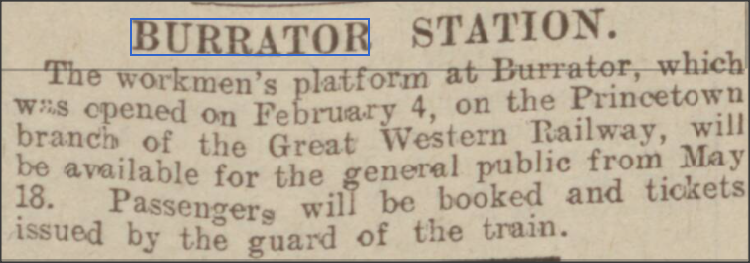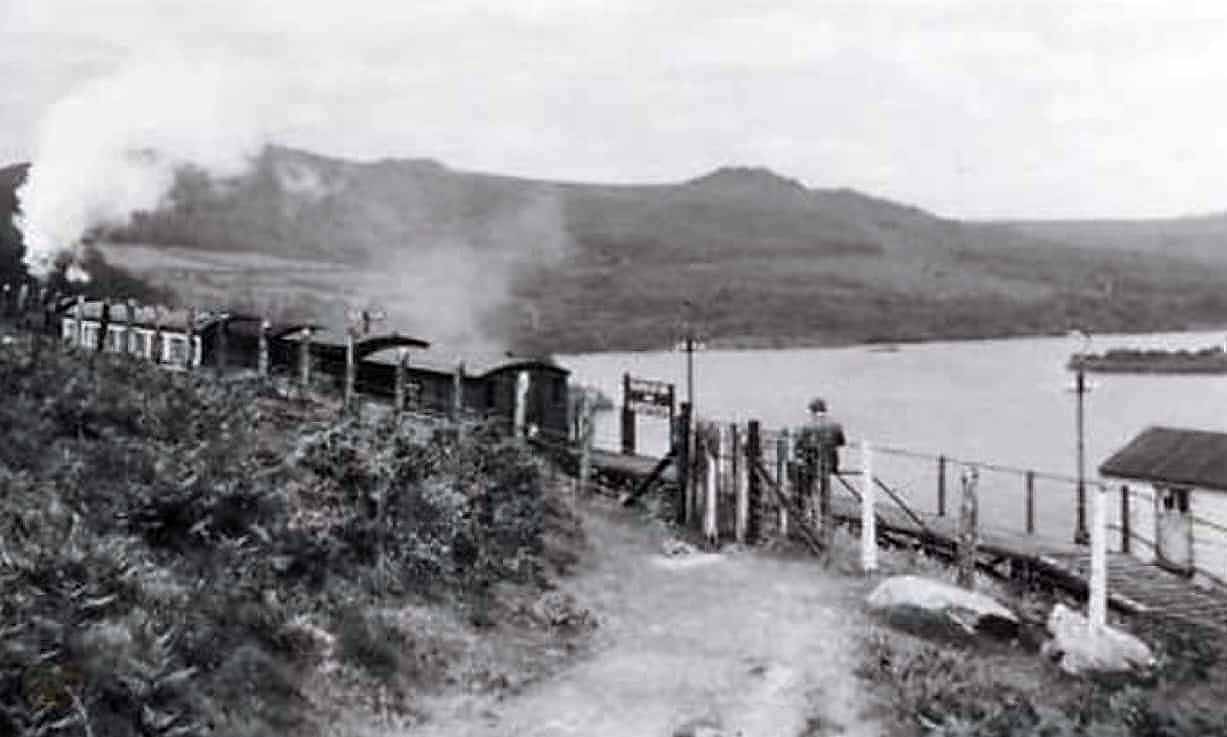About Burrator and Sheepstor Halt
Burrator & Sheepstor Halt, commonly known simply as Burrator Halt, was a simple yet significant stop along the Princetown Railway. Opened by the Great Western Railway (GWR) on 4th February 1924, the halt was designed to attract passengers, especially hikers and picnickers, keen to explore the nearby moorland and Burrator Lake.
The halt was constructed from heavy timber and supported by trestle legs. The platform itself was simple, with a concrete base, and was fitted with two electric lamp standards. These lamps were essential, especially during the darker, mistier days Dartmoor was known for. A large, somewhat oversized wooden nameboard with cast-iron lettering stood prominently, announcing the halt’s name to arriving passengers. The structure included a small timber waiting room—or more accurately described, a shelter—which was located at the southern end of the platform, providing minimal cover from the harsh moorland weather.
Passengers stepping off the train were greeted with one of the most spectacular views in the region. From the halt, they could gaze down onto the expansive Burrator Lake, with its iconic granite dam standing far below. A steep slope descended towards the dam, with remnants of an old carriage road, never officially opened, providing a path down to the water.
The surrounding landscape was equally dramatic. To the west lay the village of Sheepstor, nestled at the base of the towering Sheeps Tor, which rose to 1,100 feet. To the north, the rugged peaks of Leather Tor and Peek Hill, both over 1,200 feet high, framed the scenery. On clear days, the views from the train or platform were simply breathtaking, offering a glimpse of the vast expanse of Dartmoor’s natural beauty.
Though initially opened to encourage tourism and serve the local quarry workers, Burrator & Sheepstor Halt became a favourite stop for hikers and nature lovers, drawn by the picturesque surroundings and the chance to explore the wild landscape. Today, even though the railway is long gone, the area’s beauty remains, with traces of the old platform and iron kissing gates still visible as reminders of the halt’s former role.
In Brief
Burrator and Sheepstor Halt railway station was situated along the 10.5-mile-long single-track Princetown branch railway line, which ran from Yelverton to Princetown, with four intermediate stations. Originally opened as Burrator Platform, it was later renamed Burrator Halt upon its public opening, and then in 1929, it became Burrator and Sheepstor Halt.
On Monday, February 4th, 1924, Burrator and Sheepstor Platform commenced operations to support the workers involved in constructing the Burrator and Sheepstor Dams. Initially, a workmen’s train departed Princetown at 6:27 am, making stops at Dousland and Yelverton. Subsequently, it collected workers from the 6:20 am Millbay Station train, departing Yelverton at 6:58 am and reaching Burrator and Sheepstor Platform at 7:05 am. On weekdays, the return journey for the workers was facilitated by the 4:05 pm train from Princetown, which stopped at Burrator at 4:30 pm. Saturday mornings saw a special arrangement with the 12:25 pm train from Princetown stopping at 12:50 pm to pick up workers.
Effective Thursday, November 6th, 1924, there were significant adjustments to the schedule. Early morning trains were limited to Mondays only. In the evenings, the 4:05 pm train from Princetown ceased stopping at the Platform, while the return journey was serviced by the 4:55 pm train from Yelverton. Throughout the week, workers were transported to Burrator by the 7:38 am train from Princetown, indicating that they likely stayed at Princetown during the workweek and returned home to Plymouth after the Saturday morning shift.
On Monday, May 18th, 1925, Burrator and Sheepstor Platform became accessible to the general public, with train services operating during daylight hours exclusively.
In later years, the station primarily catered to walkers, similar to Ingra Tor Halt. It was retained as an effort to mitigate competition from local bus services and promote tourism.
Today, only the station’s foundations remain, along with the remnants of the old steps leading up from the lane and a swing gate. Much of the former railway track now constitutes the pathway of the Dousland to Princetown Railway Track.

“BURRATOR [GREAT WESTERN RAILWAY] opened 4 February 1924, non-timetable, to public 18 May 1925 (GREAT WESTERN RAILWAY Plymouth area records)*; HALT though
PLATFORM in Brad until 1928/9, daylight only; closed 5 March 1956 (T 5th); {Princetown branch}.
* = Western Morning News 7 May 1925 said would open to public 18 May, but failed to include ‘1924’ in stating that had opened to workmen, presumably those constructing reservoir, on 4 February” (source: here).


